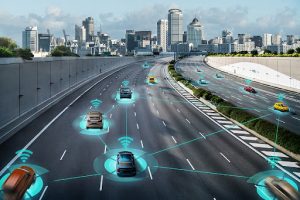
Blockchain is proving to be an enabler of secure and transparent government transactions. As with any technology, as it gains traction it also gains scrutiny. Several laws and regulations have been introduced to ensure that risks associated with blockchain are understood and mitigated.
Recently, the Government Accountability Office issued a recommendation that the Securities and Exchange Commission and other federal financial regulators create a formalized coalition to coordinate the identification and addressing of blockchain-related risks. These risks could include security gaps resulting from old software, phishing schemes, speed of networks, and foreign access to sensitive data. Continue reading


 The government's relationship with cloud computing has been an evolving affair. Initially, there was skepticism that cloud solutions could not provide the needed security that on-premise systems had been providing. With checks and balances provided by FedRAMP, security concerns were slowly but surely overcome. With the move to more remote work and the demand for digital interaction with citizens, cloud has moved from a novel approach to a necessary part of the Federal IT infrastructure.
The government's relationship with cloud computing has been an evolving affair. Initially, there was skepticism that cloud solutions could not provide the needed security that on-premise systems had been providing. With checks and balances provided by FedRAMP, security concerns were slowly but surely overcome. With the move to more remote work and the demand for digital interaction with citizens, cloud has moved from a novel approach to a necessary part of the Federal IT infrastructure. While COVID-19 cases continue to decline, and states and localities start dropping mask and vaccine mandates it's easy to get our hopes up for a return to "normal." But we've seen this "movie" and now know how quickly things can spike back up to levels impacting public health. In reality, we don't know what normal really is. For the near future, we should expect to see many pandemic precautions remain in place in some form for in-person events for the foreseeable future. This includes sanitization, spacing, masks, and vaccine mandates.
While COVID-19 cases continue to decline, and states and localities start dropping mask and vaccine mandates it's easy to get our hopes up for a return to "normal." But we've seen this "movie" and now know how quickly things can spike back up to levels impacting public health. In reality, we don't know what normal really is. For the near future, we should expect to see many pandemic precautions remain in place in some form for in-person events for the foreseeable future. This includes sanitization, spacing, masks, and vaccine mandates. The Department of Health and Human Services (HHS) has been in the spotlight like never before with their critical role in managing the pandemic. While there is a lot of work still to be done on that front, other critical efforts are taking place across HHS agencies that will have an incredible impact on the health and well-being of citizens.
The Department of Health and Human Services (HHS) has been in the spotlight like never before with their critical role in managing the pandemic. While there is a lot of work still to be done on that front, other critical efforts are taking place across HHS agencies that will have an incredible impact on the health and well-being of citizens. The sci-fi genre is riddled with plots where machines take over the world with disturbing results for humans. In reality, we are seeing machines become a partner rather than an adversary as smart IoT machines are being used by humans to supplement tasks.
The sci-fi genre is riddled with plots where machines take over the world with disturbing results for humans. In reality, we are seeing machines become a partner rather than an adversary as smart IoT machines are being used by humans to supplement tasks.
